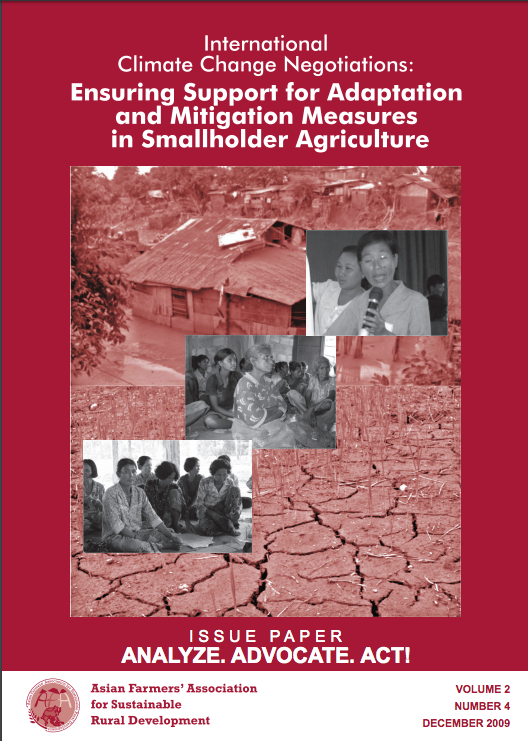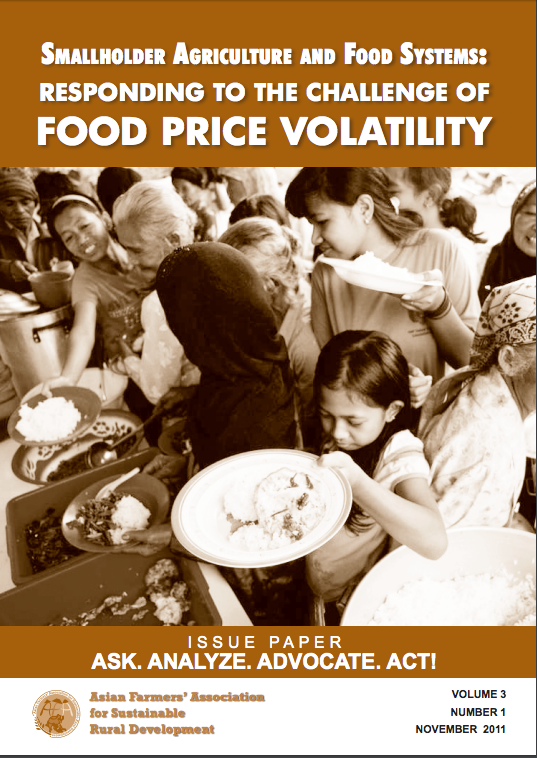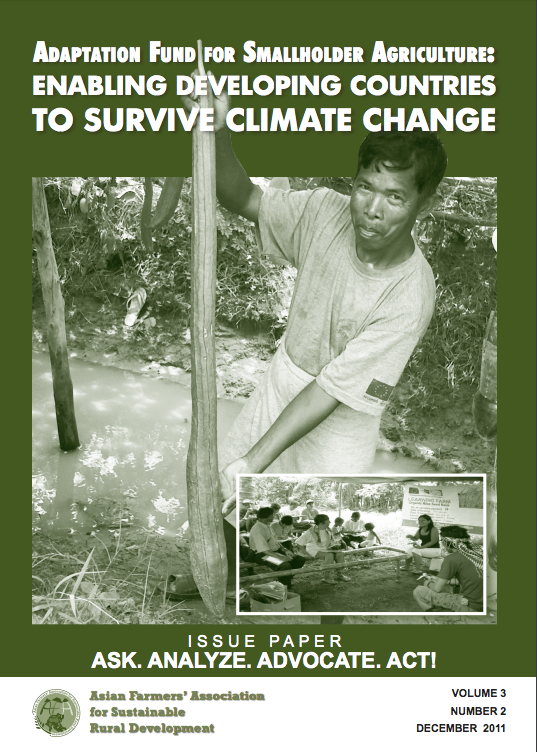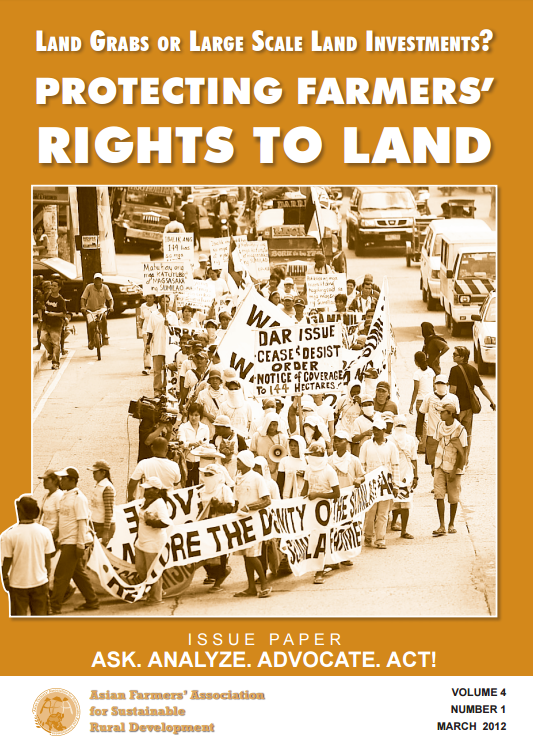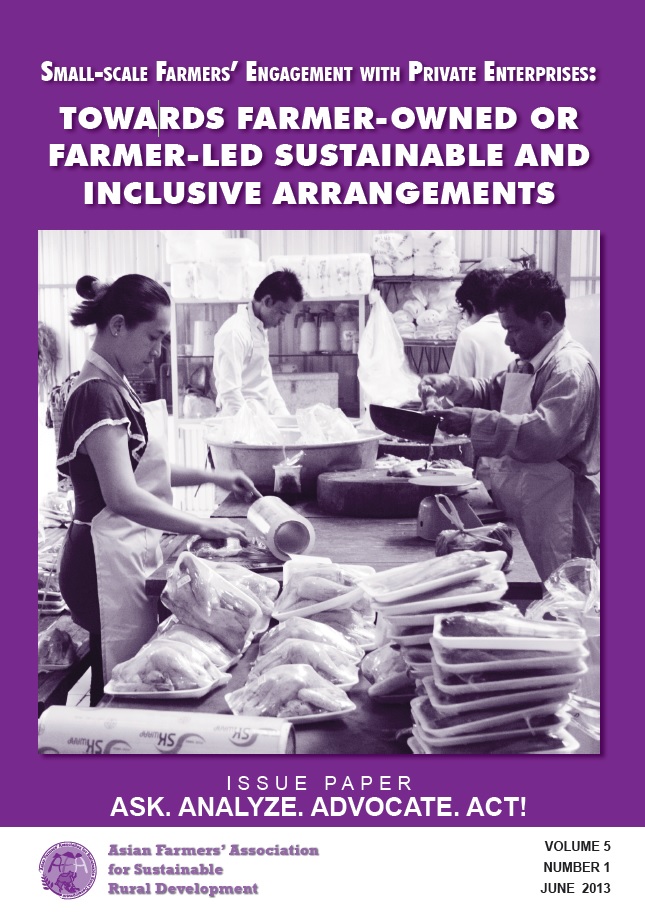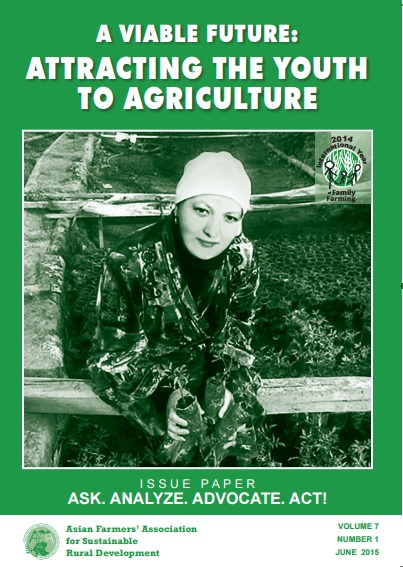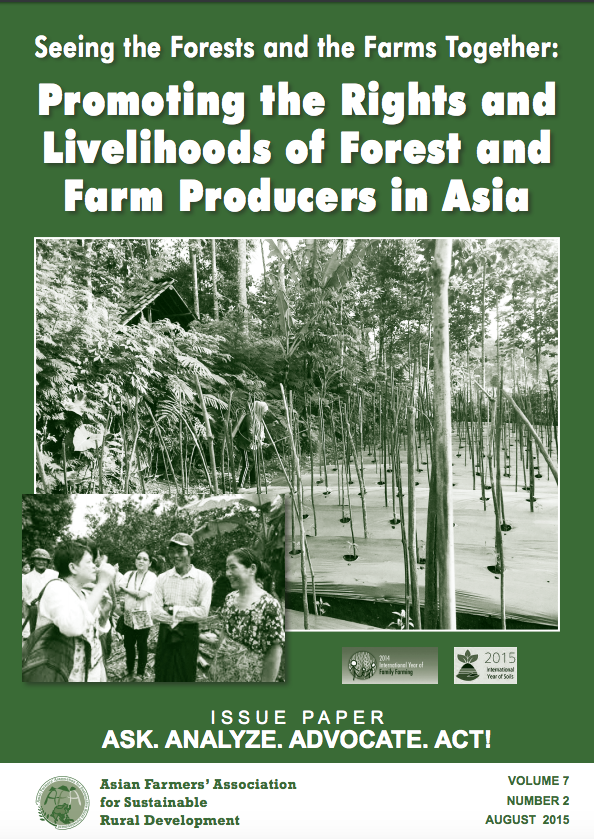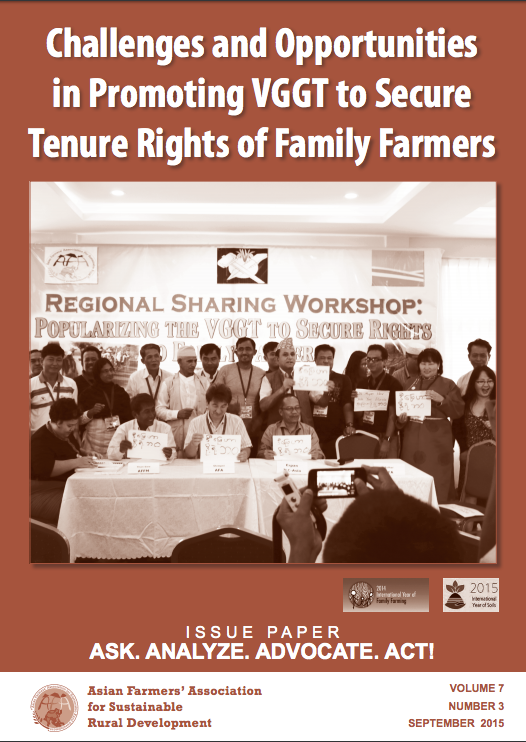Details
Location
Contributions
Displaying 1921 - 1930 of 2403International Climate Change Negotiations: Ensuring Support for Adaptation and Mitigation Measures in Smallholder Agriculture
The issue of climate change was already being discussed in the 1980s as scientists raised alarm over the world's increasing emission of manmade green house gases (GHGs), the main cause of global warming. In 1988, the Intergovernmental Panel on Climate Change (IPCC), began to look into the effects of manmade GHG emissions on climate change. Following the release of the IPCC findings in 1990, the United Nations initiated the process of convening countries with the goal of reducing man-made GHG emissions and helping countries adapt to climate change.
Smallholder Agriculture and Food Systems: Responding to the Challenge of Food Price Volatility
In 2008, Ka Lita, a woman rice farmer in the Philippines, stood in a long line to buy rice that was being sold by the National Food Authority (NFA), the government’s rice trading agency. She had been standing under the hot sun for several hours, but she had no choice but to wait for her turn to buy rice from the NFA. The rice being sold by the government’s rice trading agency was the only rice that she could afford with her money.
Adaptation Fund for Smallholder Agriculture: Enabling Developing Countries to Survive Climate Change
All over Asia, small women and men farmers are experiencing extreme and intense weather events brought about by climate change. Almost all of them are caught unprepared by changing climate patterns: rains are heavier, storms and floods occur more often, dry seasons are more intense and last longer. They do not understand why this is happening. All they know is that they have to find a way to adapt to and survive these changes.
Land Grabs or Large Scale Land Investments? Protecting Farmers’ Rights to Land
“Large scale land investments” and “land grabbing” are the terms most commonly used to describe the rising global trend where foreign and local agribusinesses, mining corporations, governments, and investment houses obtain long term rights over large areas of land. Perhaps the most famous of these is the attempt by the Daewoo Group of South Korea to lease 1.3 million hectares, or more than half of the productive agricultural lands of Madagascar, in Africa.
Small-Scale Farmers’ Engagement with Private Enterprises: Towards Farmer-Owned or Farmer-Led Sustainable and Inclusive Arrangements
“In Cambodia, Thida is happy. Her organization, Farmer and Nature Net (FNN), encouraged her to start raising organic pigs to sell to the market. A partner NGO, the Cambodian Center for Study and Development in Agriculture (CEDAC), gave her the necessary training on how to raise pigs the organic and healthy way. Now, she no longer needs to go to town to buy expensive feeds because she can source and make these from the various plants and materials around her.
Asian Farmers and IYFF: What is it for us during the International Year of Family Farming?
As opposed to agribusiness or corporate farming, FAO defined family farming as “a means of organizing agricultural, forestry, fisheries, pastoral and aquaculture production which is managed and operated by a family, both female and male. The family and the farm are linked, co-evolve and combine economic, environmental, reproductive, social and cultural functions.
A Viable Future: Attracting the Youth to Agriculture
Youth is often the time when a person starts to dream of the future, think of the path to take and boldly and aggressively set his/her life in motion. In many rural villages, to be a farmer is not part of this dreamt future . Farming is a lowly job and does not earn, so better migrate to cities or abroad where there may be more opportunities and adventure. What will then be the future of agriculture and food without young farmers? No farmer, no food. No food, no life.
Seeing the Forests and the Farms Together: Promoting the Rights and Livelihoods of Forest and Farm Producers in Asia
There is a very close relationship between forestry and farming. Both forests and farms are source of food (both from plants and animals), nutrition, health, and livelihoods for family farmers. Besides, forests provide sources for fuel, energy, water and medicines. Forests beautify and contribute to biodiversity in a particular landscape.
Challenges and Opportunities in Promoting VGGT to Secure Tenure Rights of Family Farmers
In 2014-2015, the Asian Farmers Association for Sustainable Rural Development (AFA) implemented a project entitled “Popularizing the VGGT Among Small Scale Farmers Organizations, Relevant National Government and Inter-governmental Organizations” with the support of the International Land Coalition (ILC).
Public Spaces: A key tool to achieve the Sustainable Development Goals
Source: NCD Alliance
Public space interventions have the potential to contribute to progress across numerous Agenda 2030 goals and targets, not only SDG11 on Sustainable Cities. Kristie Daniel explores the opportunities public spaces present for different SDGs, and summarises the case for governments and communities to prioritise investing in them.


